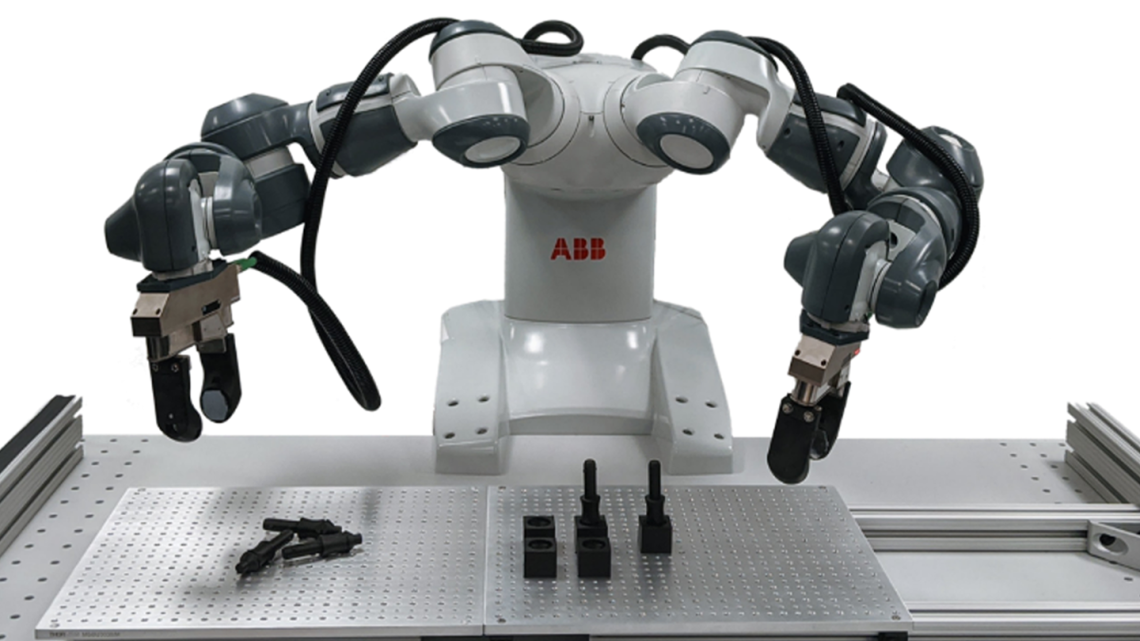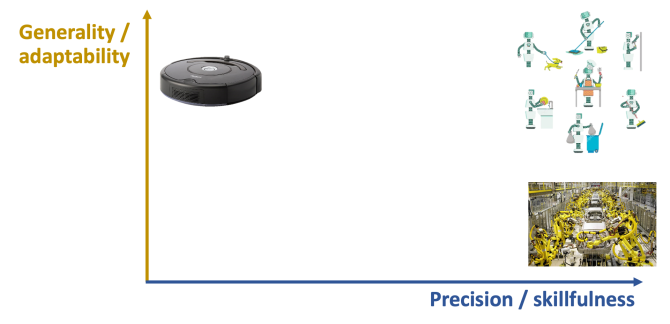
A robot that Maria Bauza Villalonga is currently building to be both general and precise.
News directly from Cornell's colleges and centers
Creating Our Robotic Allies
By Jess Campitiello
When we think of having our own handy multi-purpose robots, we tend to picture something out of Star Wars or The Jetsons — something futuristic and far out of reach. The one robot that’s actually entered our world, the Roomba, has only one function (to clean) and is just about the least intelligent it can be at doing so.
However, the useful technology of the ‘future’ may not be as far off as we think. Robots can realistically become our best day-to-day allies, but how? Maria Bauza Villalonga, PhD student at MIT, hosted a Seminar @ Cornell Tech to help answer this question.
Right now, there are two broad categories of robots: industry robots and home robots.
Industry robots — such as those used to manufacture automobiles — are extremely precise in the tasks that they perform; however, each robot is designed to do one task, and one task only. They have narrow manipulation skills, function properly under very specific conditions, and engineers must be brought in to program each robot to do its own task. This means that although they do their jobs well, small changes in manufacturing can cause old models to become unusable and un-reusable.
Home robots, on the other hand, have simple yet imprecise skills. These models are capable of working successfully in many different locations with varying conditions and environments, but they do their tasks with little precision. For example, a basic Roomba’s movements are completely random, running over the same spot multiple times and bumping into anything in their paths. Even with newer, high-tech models featuring optical sensors and laser emitters, their movements “appeared confused” as they moved “in fits and starts, constantly pivoting in different directions.” While they are versatile and user-friendly, they are far from being as efficient as industry machines.
How can we marry these two ideas to create a robot that is both general and precise? Bauza posited three things a model must do in order to achieve successful “precise robotic generalization”.
- Actively learning about what matters
When it comes to robots interacting with the world around them, recognizing object shapes is key. Using both visual and tactile sensors to recognize unique shapes, a robot can identify objects without having any real experience with them. A hurdle to overcome here is finding a way to be able to do this efficiently regardless of an object’s pose, or position, relative to the machine. The ultimate goal is for the robot to reconfigure an object’s position only once before effectively completing the task it was programmed to perform with it. - Making sense of its observations
Once an object is successfully identified, the robot should know how to properly handle it. This requires the robot to understand the language of forces. For instance, the robot’s gripper must exert enough strength to counteract gravity and pick up the object, but not too much to damage it. - Continuously updating its knowledge
By running the robot through simulations and using it in real-world applications, it will continuously improve its performance and task efficiency. While current approaches to this require a researcher to step in to gather data and make adjustments, an ideal system would close the loop between simulation and real-world data while cutting out the need for researcher intervention.
By focusing on these three key points, Bauza argues that we can get robots to be very precise, skillful, multi-purpose, and adaptive without having to rely on trained operators to program them.
Jess Campitiello is the Digital Communications Assistant at Cornell Tech.
Media Contact
Get Cornell news delivered right to your inbox.
Subscribe

